Kibber village in Spiti is the most popular village in the valley. It used to fall under the league of ‘one of the highest in the world,’ though that kind of terminology is variable and hard to validate. Kibber chronicles span from ancient monasteries and cold-desert wildlife sanctuary to highland treks. Fancy to explore its treasures?

Let’s have a look at the in-depth travel guide to visiting and exploring the village. This article is the second one in my series of Spiti Valley villages.
Let's quickly dive into the details:
About Kibber
Kyiber, commonly known as Kibber or Kibber Khas village, is a high altitude village in Spiti valley and acclaimed as the second highest motorable village in the world. The landscape of the village is captivating; it is surrounded by limestone rock mountains.
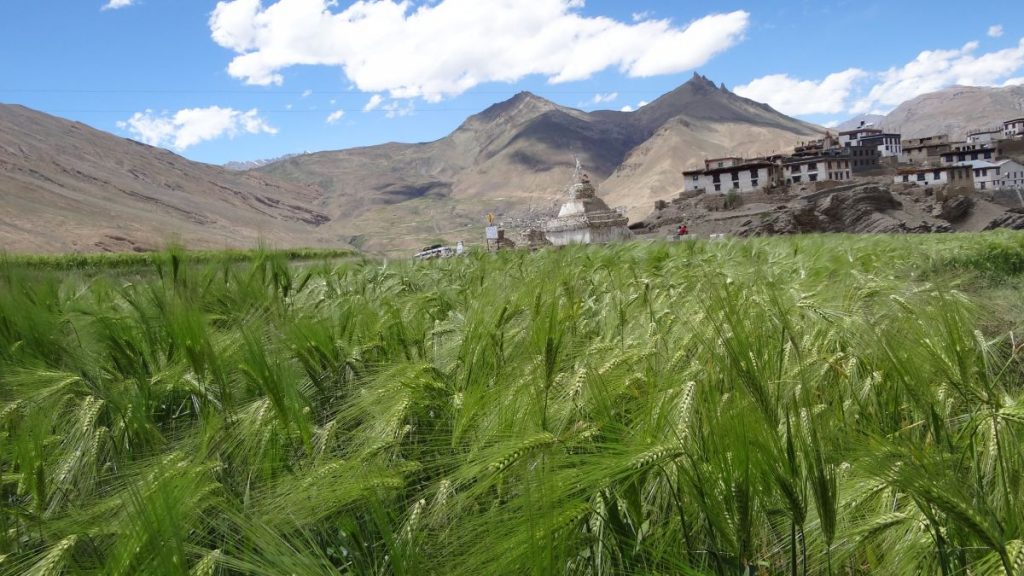
With a population of under 400 people, Kibber is home to the magnificent snow leopards. The Himalayan Snow Leopard Research Center at Kibber has been instrumental in the conservation of the animal. People at Kibber do farming and livestock rearing for their livelihood. Not many areas in Spiti are fertile, Kibber is one of the high-yielding lands in the region.
The village is well structured with stone houses, a school, a post office, a primary healthcare center, a PWD rest house, and is headed by a sarpanch (elected head of the village). The wind-carved mountains and whitewashed houses which look exactly similar to their red windows and blue doors are salient features of almost all Spiti villages. However, at Kibber, the houses are unique in one feature. They are made of stone, instead of mud.
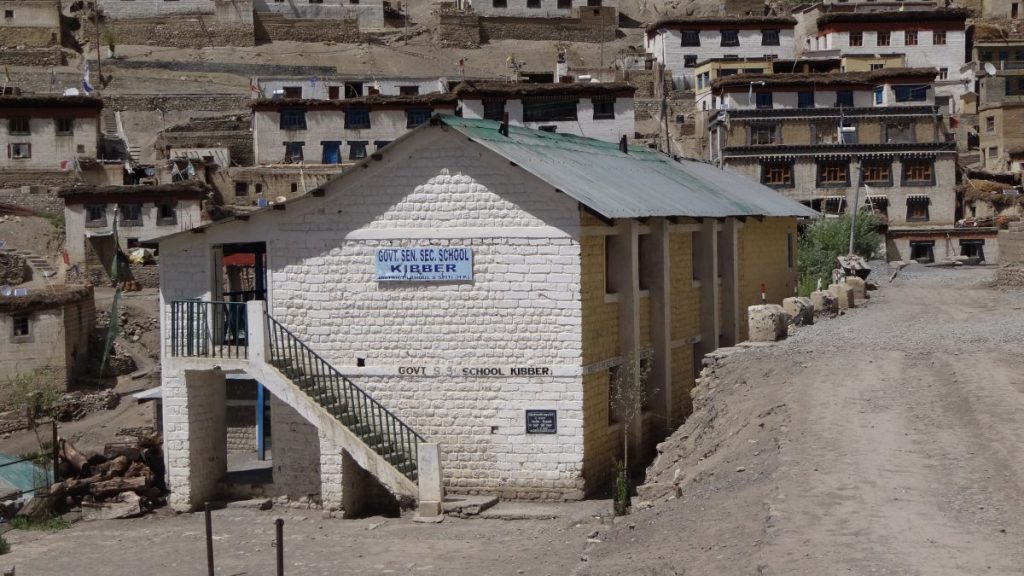
Historical Significance
In commune with the Spiti valley, residents of Kibber also practice Tibetan Buddhism. In fact, the village holds a special significance for Buddhists because Serkong Rinpoche, the teacher of the current Dalai Lama died here in the late 80s. His Holiness the Dalai Lama also expressed his wish once to retire at Kibber.
An ancient trade route between Spiti valley and Ladakh across the Parang La Pass initiates at Kibber. Nomadic tribes of Changthang region in Ladakh and people of Spiti used to trade by barter system, for horses, yaks, and food at the famous La Darcha festival. You can enjoy the festival at Kaza in August every year.
Though Langza village is most famous in Spiti valley for fossil hunting, the entire region of Spiti valley is fossiliferous, including Kibber. Don’t be surprised if you stumble upon an ammonite or marine fossil here, as the whole Himalayan belt rose from the ancient Tethys sea only.
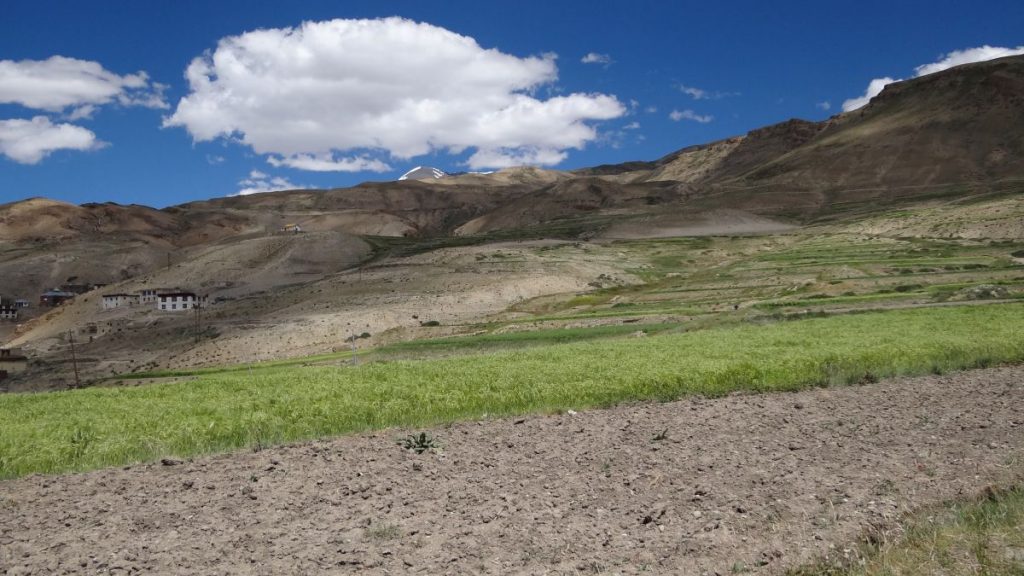
Location
At an elevation of 4270 meters, Kibber is situated in a narrow valley. The village is 20 kilometers (40 mins drive) away from the town of Kaza.
Weather & Best Time to Visit Kibber
Summer is a good time for a hassle-free trip to Kibber. Winter snow enhances the wilderness and beauty of Spiti valley but poses many challenges too. However, the best time to visit Kibber or Spiti valley depends on the route (Manali to Kaza or Shimla to Kaza) you take and the kind of experience you are seeking.
Spiti’s weather is cold and dry. Winter months are extremely harsh, with the temperature in Kibber dropping as low as -20 degrees. Several feet of snow blankets the entire valley, which makes reaching Kibber a challenging task in this season. Rohtang pass shuts due to heavy snow, so Manali to Kaza route is not an option in winters.
Summer witnesses very bright sun, altitude increases the intensity of sunshine. Though nights are still cold enough to use woolens. Monsoon months don’t see much rain or no rain at all. But the roads leading to Spiti from Manali or Shimla witness rainfall and landslides, leading to blockages and closures including Rohtang pass.
For a detailed and month-by-month guide on when to travel to Spiti, please refer to our article ‘Best Time to Visit Spiti Valley – A Month by Month Guide’
Things to do in Kibber
Kibber’s beautiful vistas are a sight to behold, surrounded by green fields and limestone mountains. Few beautiful treks such as Parang La, Dangcham peak, Gette, Chicham, and Tashigang villages originate from Kibber. You can explore the Buddhist heritage through the neighboring Ki Monastery and the Kibber village temple.
However, the most exciting part about this village is the Kibber WIldlife sanctuary, which is home to the elusive snow leopard, Ibex, and Tibetan wolf.
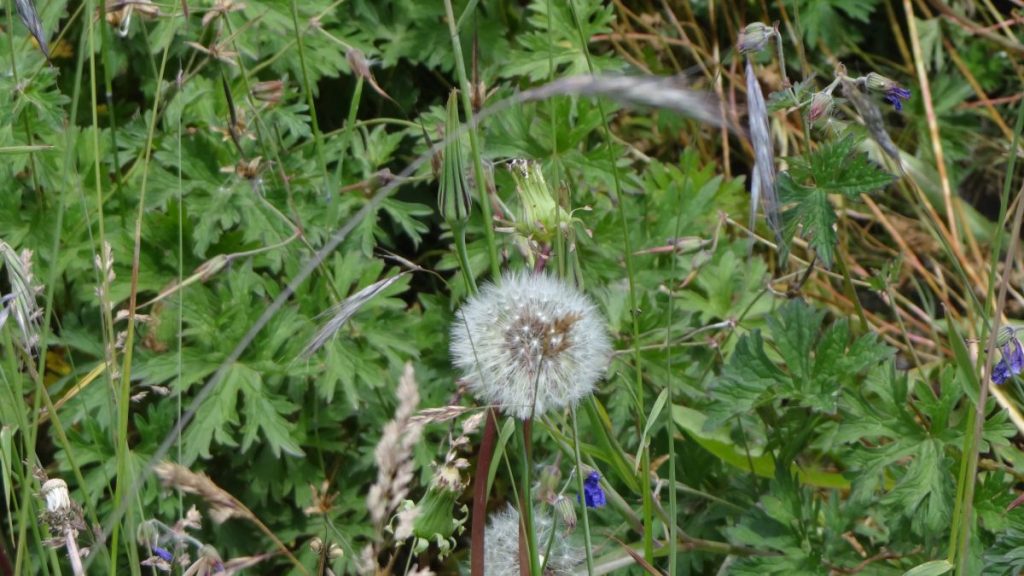
Kibber Wildlife Sanctuary
With an elevation range of 3600-6600 meters and spread across 1400 square kilometers, this is the only sanctuary in India which is situated in a cold desert. This Himalayan forest harbors some rare species of flora and fauna.
The superstar of this sanctuary is obviously the magnificent snow leopard, which is difficult to spot. However, their sightings have increased significantly in the past decade and at present, there are around 25-30 snow leopards in Kibber sanctuary. Besides this sanctuary, it can be spotted at Pin Valley National park also in Himachal.
Also, know as the ‘grey ghosts’, snow leopards are easier to spot during the winter season in Spiti Valley. During winter, their prey ‘Himalayan goats’ and other animals come down from higher altitudes to the valley for food. Snow leopards come down the trail following their prey and hence become visible.
These discreet cats camouflage so perfectly among their surroundings, especially snow, that you could be looking right at it from a distance and might not able to spot it till it moves! So, you need specially trained local guides to take you on a trail for snow leopard spots. The cats inhabit cliffs and rugged terrains to ambush their prey, which makes it imperative that you are accompanied by someone who knows the landscape.
Few young residents from Kibber and neighboring villages have been trained by the HP government in spotting snow leopards which have become a reliable source of livelihood for them.
In addition to snow leopards, the sanctuary inhabits Tibetan Wolf, Ibex, Bharal (Himalayan Blue Sheep), Tibetan Woolly Hare, Pale Weasel, Tibetan Wild Ass and Red Fox. Himalayan Birds, such as Griffons, Bearded Eagle, and Snow Cock also adorn the sanctuary.
The region is rich in many endangered species of plants, which are used in the production of traditional medicines, cosmetics, and also as food for livestock. Some of these plants play an important part in the Traditional Tibetan Medicinal Healing System.
Local operators from Kaza town organize treks and safaris to Kibber Sanctuary. Almost all home-stays at Kibber also organize excursions to the sanctuary and provide trained guides.
Parang La Trek
Kibber village is one of the starting points of the ancient Parang La trek. You can also start the trek from Chicham village in Kibber’s neighborhood. Parang La is a mighty pass with a maximum altitude of 18,400 feet connecting the Spiti valley with Ladakh.
During olden times, it served as a traditional trade route between the people of Spiti, Changthang in Ladakh and Tibet.
It is a long and difficult trek, which offers splendid views of Tso Moriri lake. Starting from the meadows of Spiti’s villages, the trail descends the Kibber gorge and then climbs over Parang La.
The trek then follows the Pare Chu river which originates from Datung near Parang La in Leh. It is the only river of its kind which originates in India, flows into Tibet near Chumar, then again enters India in Spiti, and finally reaches Tso Moriri Lake.
Words fail to describe the beauty and splendor of this trek’s landscape. Imagine crossing two regions of the cold desert, a high altitude pass, a unique river, and ultimately reaching one of the highest and pristine lakes in the world. The trek includes walking along the length of Tso Moriri for almost two days!
This is an intense trek that passes through challenging landscapes, so make sure you have some prior experience of trekking at high altitudes before you attempt this. Sufficient acclimatization and physical fitness will help too.
Home-stays at Kibber and local trek organizers at Kaza can help you with the trek and all kinds of gear. It is advisable to go along with a group, preferably with local guides on this trek. You will need almost 8-9 extra days if you go on this one.
Hike / Drive to Nearby Villages
There is no better way to explore a place, especially mountains, than walking around the locale. Kibber is a part of the larger puzzle called Spiti, which surprises you with a new spectacle at every turn.
From gorges to valleys, snow-capped peaks to green meadows, brown deserted mountains to hidden ponds, lush fields to rocky hills. You can hike or drive (up to a certain point) to the three neighboring villages of Kibber – Chicham, Gette, and Tashigang

Chicham
Chicham is approximately 6 km away from Kibber. This village has Asia’s highest (13,596 feet) suspension steel truss bridge, which stares down at the 1000 feet deep gorge and connects Kibber to Chicham. The task of constructing the bridge on such formidable terrain was undoubtedly difficult and took 14 years to get completed.
But now, the bridge has reduced the distance from Chicham to Losar by 40 km and provided the much required direct connectivity to Chicham. Chicham lies across the Parilungbo canyon, and until this bridge was constructed (which is only a couple of years back), a ropeway was the only means of transport between Chicham and the rest of the civilization.
You can now travel to Chandratal lake from Kibber via Chicham without going back to Kaza.
Gette
Gette is barely a village, it rather is called a cluster of few homes scattered across the brown mountains, green fields and many ponds full of blue waters. A short drive of about 8 km will take you till Gette village. However, from here, dirt road starts, and you would have to trek to get inside the village. The landscape and serenity are of course, unmatched.
Tashigang
Further, from Gette, the same dirt road goes towards another gem of a village named Tashigang. A village in the clouds, yeah! That’s what locals call it. This village again is a cluster of 4-5 houses, a beautiful lake, and lots of fields around it.
Ki Monastery
Key or Ki is the grandest and oldest monastery of Spiti Valley, which is supremely famous with travelers. Built on a hill, like a fort, it gives the appearance of an ancient castle more than a place of worship.
From Kaza, the Ki monastery is about 14 km away. However, if you want to cover it during your stay at Kibber or return journey from Kibber then it is around 8 km away from Kibber and can be clubbed in your return journey from Kibber.
Kibber Village Monastery
The local monastery of Kibber village holds huge significance for the followers of Buddhism as it was founded by the eminent Serkong Rinpoche, who was the current Dalai Lama’s master of debate. He passed his last days at this monastery and died in 1983 at this very place.
Sky / Star Gazing
Spending a night at Kibber will reward you with astounding views of the sky. Kibber is one of the best places for astrophotography and stargazing. The altitude and remoteness of Spiti valley make for many magical spots to look at the milky way with naked eyes or millions of stars, even some planets.
The experience is out of the world and leaves you speechless. The crystal clear sky has made it a favorite destination for night-photographers and sky gazers.
How to Reach Kibber
Kibber does not have a rail or air connectivity. It is connected to the nearest town, Kaza, by road.
By Road
Kibber is almost 30-40 minutes of drive away (20 km) from Kaza. A local bus plies from Kaza to Kibber every evening at 4 pm and returns Kaza the same day.
Kaza is connected to Manali, Shimla, and Chandigarh by a network of buses. Shimla and Chandigarh buses reach Reckong Peo and from here you have to board another bus to Kaza.
An alternative option is to drive all the way to Kaza from any of these towns.
For details on public transport around Spiti valley, refer to our article How to make a budget trip to Spiti Valley by public transport.
If you are self-driving to Spiti Valley, you will need to acquire permits to cross Rohtang pass (if choosing to follow the Manali-Kaza route). For details on getting Rohtang pass permit, please read our article How to get Rohtang Pass Permit Online or using Mobile App in 2019?
By Train
The nearest train station is Joginder Nagar (364 km from Kaza), which is a narrow gauge station and receives a train from the Pathankot railway station (broad gauge). The major nearest railway station to Kibber is Chandigarh (500 km from Kaza).
By Air
Chandigarh is the nearest international airport and Bhuntar (Kullu) is the nearest domestic airport with limited flight connectivity.
The onward journey in the case of rail and air travel can be made by taxi/ self-drive or bus.
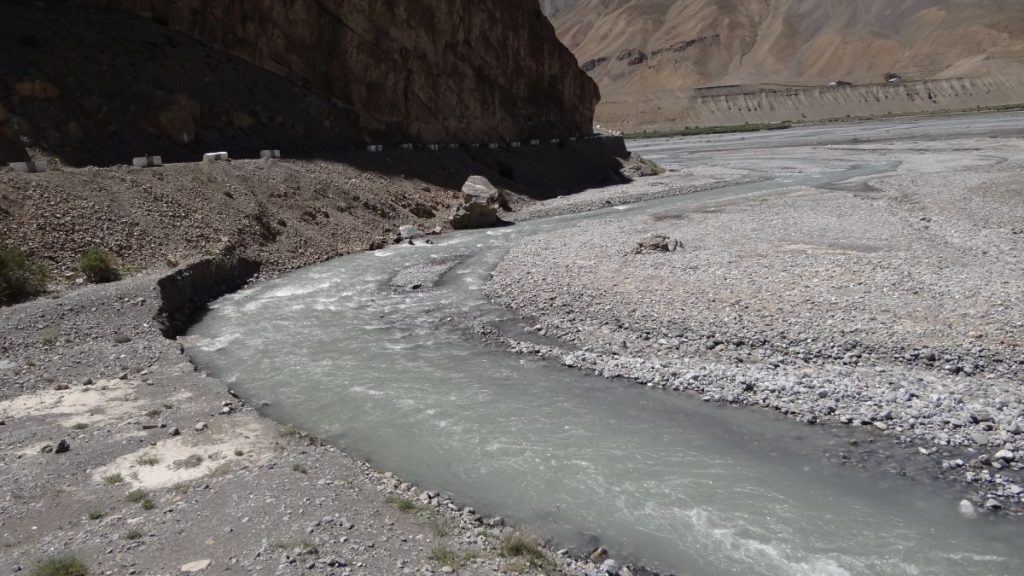
Where to Stay in Kibber
When in Spiti, stay like a Spitian! As Kibber is one of the most famous villages of Spiti Valley, it has several home-stays for wide choice options. There aren’t any fancy hotels, given the remoteness of the place. Here are a few recommended stay options:
Norling Home-Stay
The homestay has 12 rooms with attached bathrooms, with 24 hrs hot water and basic amenities, no TV. Meals are Spitian (Tibetan, Indian and Himalayan cuisine), made from locally procured and organically produced ingredients.
A night’s stay here costs between 1200-1500 INR along with meals. The hosts are warm and welcoming, you can contact them at +91-9418556107
Deshek Home-Stay
Located right opposite the Kibber school, this is a small and comfortable place where you would experience good hospitality, basic amenities, and delicious home-cooked food prepared by the local host family. Spread on three floors; the hotel has a terrace on each one with beautiful views. You can contact the host, Indra at +91-7650074070.
What to Eat
Food made fresh from locally grown ingredients is the best kind of food, be it any cuisine. And that is what you get in Spiti valley, including Kibber. Peas, potatoes, and barley are the local crops and taste best here.
Tashi Zom guest house at the entry of the village is a good place to start exploring the food of Kibber. When we visited, they served a dish of potatoes and peas along with fresh bread.
As they make everything from scratch after you place the order, you will have enough time to chill at the terrace of the guest house, while they prepare your food.
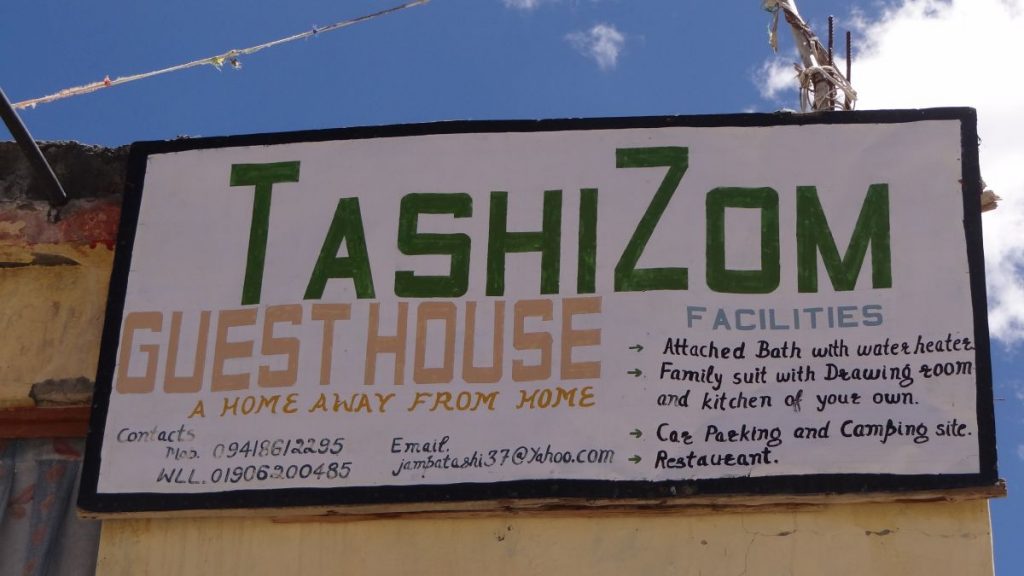
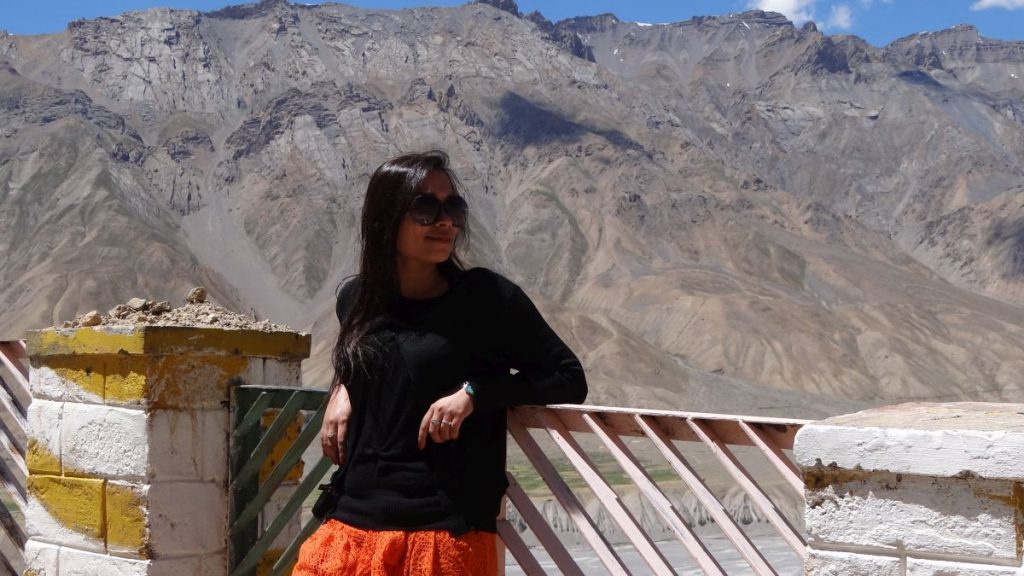
Suggested Itinerary
I always recommend staying at a place for at least a night to experience it to the fullest. However, if time doesn’t permit then Kibber can be included in your Spiti itinerary as a short trip from Kaza while visiting Langza, Hikkim, Komic villages or Ki Monastery.
Day 1 | Kaza to Kibber
- Reach Langza from Kaza via rented taxi or car in the morning, or by the daily bus in the afternoon.
- If you leave Kaza in the morning, you can visit the Ki monastery en route to Kibber.
- Visit the village monastery, stroll through the fields and meet with Kibber school kids (if possible)
- Hike or drive to Chicham, Gette, and Tashigang.
- You may return to Kaza in the evening.
- Or spend the night at a home-stay and enjoy their hospitality.
Try astrophotography, if it interests you. Or simply enjoy the night sky. - Return to Kaza next day
Below is the added itinerary for exploring Kibber Wildlife Sanctuary
Day 2 – 4 | Kibber Wildlife Sanctuary
- If you would like to go on a snow leopard trail, you would need to go to the interiors of the sanctuary and search for the famous animal. Take a local guide along for the trek.
Important Tips
- Always carry a sunblock, sunglasses, water bottle and if possible a hat whenever you are out on sightseeing in Spiti valley. Sun at such altitude is harsh enough to burn your skin.
- Spiti’s weather and the terrain are fragile. Go prepared with a basic list of things to carry on a Spiti trip.
- Usually, BSNL signals work throughout Spiti valley, but in Kibber they can get a bit patchy. However, when you hit the road to Kaza you should get connectivity. You get good signals at the Ki monastery. For details on mobile phone connectivity in Spiti valley, refer to our article on 11 Tips on Mobile Phone Connectivity in Spiti Valley
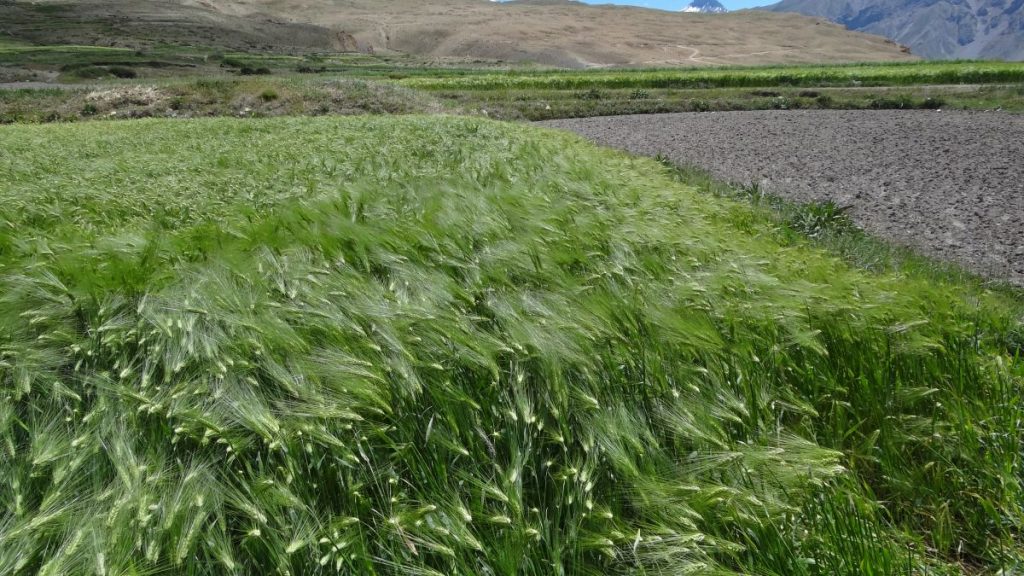
Travel Responsibly
We can not stress enough on the need to save the Himalayan ecology and communities from the negative impact of increasing travel in the region. Spiti’s water supply is highly dependent on snowfall in the region. Lesser snowfall during winter means, lack of water during summer for farming (which is the major occupation here) and utilities. By following simple practices we can do our bit to conserve this eco-sensitive zone:
- Carry a refillable water bottle
- Use and encourage the building of dry toilets
- Do not litter, especially not around water resources
- Do not pollute water resources in any way
- If you can, bring your trash back to cities
Read these most important tips on responsible travel for more such tips
Conclusion
Kibber is a moderately developed village of Spiti valley and popular among tourists. It has motorable road connectivity, home-stays, hospitable people, and much to explore.
Like traversing through high altitude forest and see its inhabitants? or want a dose of ancient Buddhist treasures? Then, Kibber should be on your Spiti itinerary.
Have a travel question?? You can subscribe to my YouTube channel and leave a comment to ask your travel questions about traveling to the Himalayas.
I hope, this detailed guide to Kibber will help you to plan your journey better and make it a memorable one.
Do you still have any questions or suggestions or need any help in planning your trip to Kibber? If yes, please feel free to post them either in the comments section of this article below or direct message on Instagram.
If you like the article, please feel free to share it with any of your family or friends who are planning a trip to Kibber or Spiti Valley.
Happy traveling to you!!!
Do follow @soulful_worldview on Instagram for updates on my next adventure.


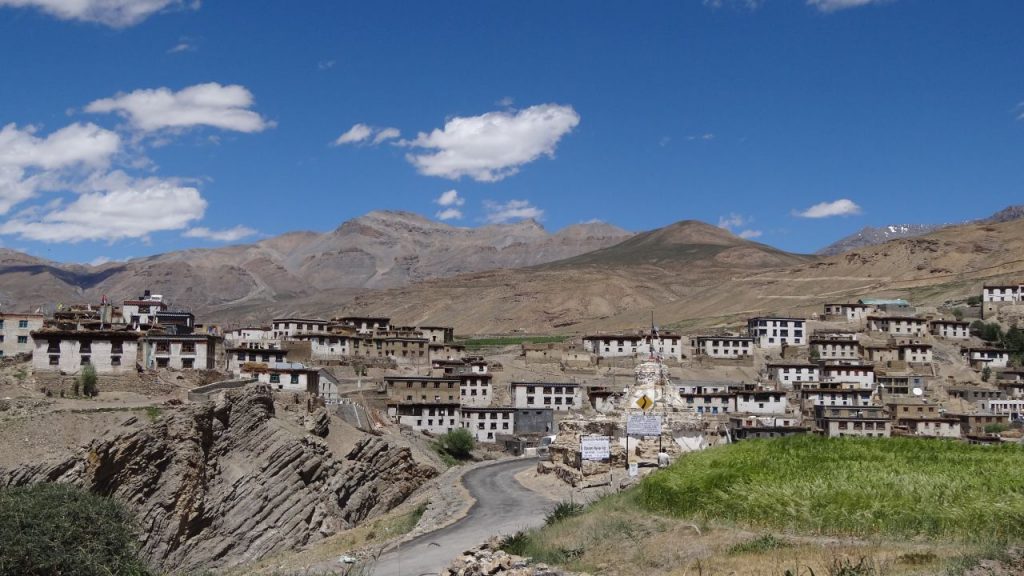


![What is the best bike or best motorcycle for Leh Ladakh bike trip? [4 Things to Consider]](https://discoverwithdheeraj.com/yt_vid_thumbs/ladakh/81.png)

3 Comments
Comments section gets closed in 90 days. To ask your travel questions, you can follow my YouTube Channel for a faster reply or for a much slower reply follow me on Instagram. :)
Thanks Vinod 🙂
This is a beautiful one Anchal. All the info at one place. Though I’d visited this as a part of day trip to Kei, Hikkim, Langza etc., there seems to be so many things I’d missed here (whcih I’m getting to know after reading this piece) – so calls for another trip there now . Thank you for showing kibber to us through your words
Go for it Vinod bhai 😀 … A winter trip to Spiti !!